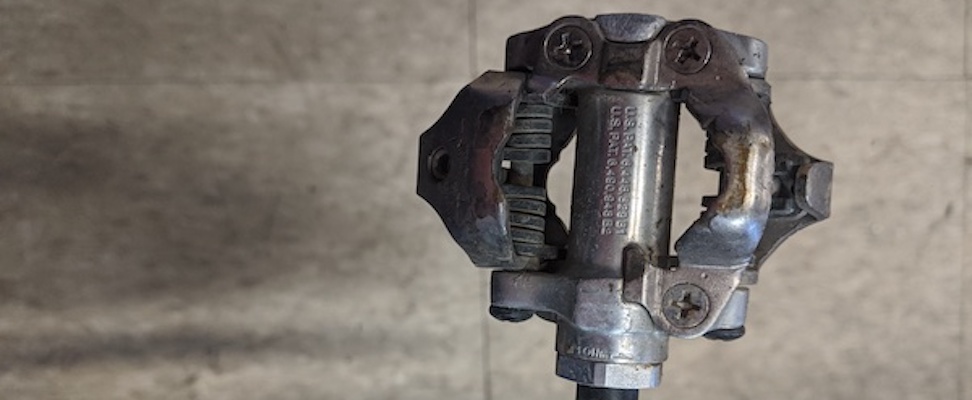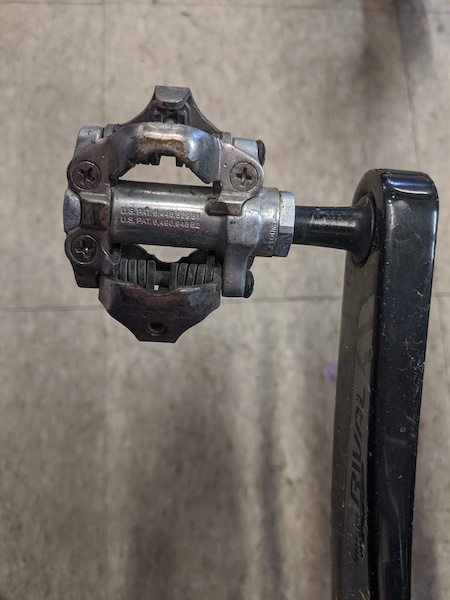
Should you ride in flat pedals or clipless?
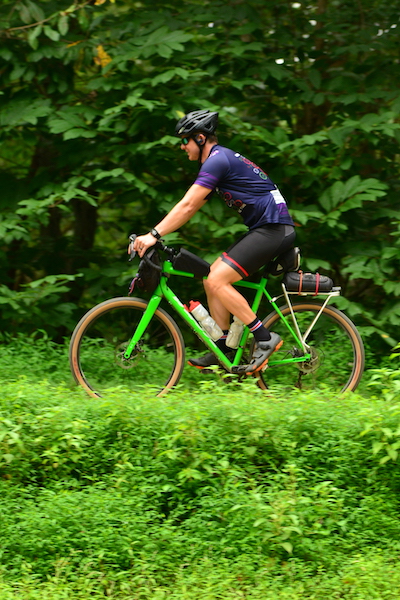
Bike pedals seem like a small factor, but they’re actually a huge part of your ride! Pedals are one of the main contact points to your bike, transferring power from your legs and feet into your drivetrain. Without pedals, you wouldn’t be able to ride very far! Your pedals should be comfortable, and they shouldn’t make you nervous to ride your bike.
When choosing bike pedals, first think about the type of riding you’ll be doing. Are you doing fast, hilly road bike rides, or casual, relaxed spins down a rail trail? Are you looking for the pedaling power and efficiency of clipless pedals (where cleats on the bottom of the shoes secure your feet to the pedals) or the ease and maneuverability you get with flat platform pedals? Maybe you want the benefits of both.
If you decide on clipless pedals, make sure your pedals, cleats and shoes are all compatible. Cleats and pedals are usually sold separately.
What are clipless pedals?

When a system of toe cages and straps was invented for bike pedals, it was called a “toe clip.” For a long time, this was the most efficient method for securing feet to bike pedals. In the 1980s, an alternative pedal came along whereby cleats literally clipped into the pedals, but they were not just “toe clips.” So, the name “clipless” was born.
Using toe clips or clipless pedals, you can use all the power you generate from both pushing down and pulling up on the pedals. Mechanically, this doubles your pedaling power (compared to flat pedals), making for greater efficiency—especially when climbing hills.
Clipless pedals work by mounting a small plastic or metal cleat on the sole of your shoe that typically snaps into a set of spring-loaded “clips” on the face of the pedal. Clipless pedals feature cleats with a 4-, 3- or 2-hole design.
So what’s better about clipless pedals? Clipless pedals provide a high level of control while riding fast or when riding over uneven terrain. If they’re used along with stiff cycling shoes, clipless pedals allow you to apply more power directly to the pedals. Your feet won’t bounce off the pedals as you apply power or while riding through bumps. It can take some practice (and a few inevitable, ungraceful falls off the bike) getting in and out of clipless pedals, but once you get the hang of it they’ll feel like second nature.
If you’re really interested in the science behind these claims, you can dig into some scholarly articles on clipless pedals or maybe get lost in some Youtube videos for the afternoon. Have fun!
What are platform pedals?
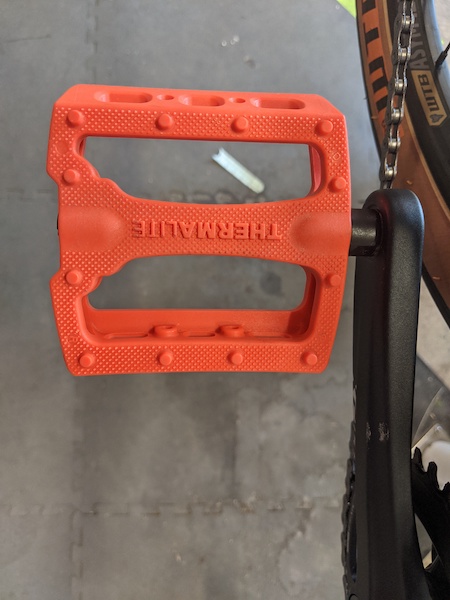
Why choose flat pedals? Downhill mountain bikers prefer this type of pedal paired with a specifically designed shoe with grippy soles or tread. This combination provides sufficient grip and control, and it’s easy to disengage your feet in the event of a crash. Platform pedals may also give you the confidence to help avoid a crash. Flat pedals, unlike clipless pedals, don’t require any finesse to use.
Recreational cyclists, commuters or riders who get on and off their bikes frequently may want flat pedals so they can wear more comfortable shoes that are easier to walk in. It’s nice to tour with flat pedals, because you never have to change your shoes throughout the day.
You can also try traditional toe clips, which are cagelike frames that attach to the front of platform pedals and surround your toes. For many years, toe clips were the best method to secure your feet to the pedals. But they’ve been rendered largely obsolete with huge improvements in clipless pedal manufacturing.
The benefit of toe clips (compared to clipless pedals) is that they don’t require cycling-specific shoes, and they’re cheap. The downside is that toe clips are also quite fiddly to use, and they have to be hand tightened (and often retightened while riding) to get the maximum benefit of being strapped in.
Types of clipless pedals
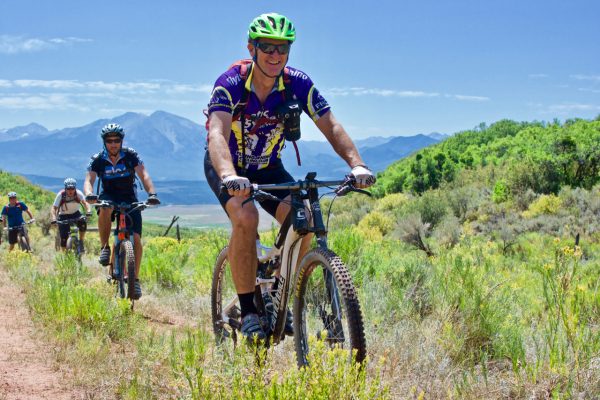
Mountain bikers like clipless pedals to have better control of their bikes, more power while climbing, and to have confidence that their feet won’t slip off the pedals. Riders who want to freely take their foot off the pedals in technical terrain, aren’t as comfortable with using clipless pedals or are just learning to ride will probably prefer the ease of platform pedals.

Road bike pedals often feature cleats with a 3-hole design. Often called the Look cleat, named after the company that designed this concept, the system system uses a plastic cleat attached to three holes drilled into the bottom of a shoe. This cleat protrudes out to attach to a corresponding pedal.
Compared to a two-hole system, the Look cleat is very stiff and responsive—a big reason road bikers prefer it. The Look cleat is wider than a two-hole design and covers more surface area, enabling it to withstand the high-load pressure that can be created while pedaling hard on a road bike. But if you’re not racing bikes or riding fast on a regular basis, consider opting for a two-hole cleat design, which can be more forgiving. If you are a serious road biking enthusiast, though, the three-hole design is a great choice.
The four-hole cleat design is less common. Technically speaking, there are differences to the force load being applied in three- versus four-hole designs. But this is where manufacturer and personal preference come into play.
Generally, prices for a pair of clipless pedals range from approximately $50 to over $200. Price largely depends on the type of design and materials used.
Choosing pedals for bike touring

Our cycling vacations involve frequent support stops, chances to take a mid-ride hike, distillery tours, museum visits or cafe lunches. You’re welcome to stow a pair of comfortable walking shoes in the support van for easy access during the day. But if you don’t want to bother changing your shoes, we recommend riding in flat pedals. Many of our tour guides choose to ride in flat pedals for this reason.
Or consider hybrid bike pedals: The hybrid pedal offers the flexibility of platform pedals on one side with the efficiency of a clipless system on the other side. It’s an excellent transition pedal for anyone looking to ease into clipless. While most folks thinking of clipless pedals go “all in” or not at all, these offer an alternative for those who don’t always ride with a cycling shoe.
One last word
Hopefully this article helps you decide what kind of pedals are best to use on your next bike tour!
As one final piece of advice, we recommend that you use the type of pedals you’re most comfortable with. If you’ve never ridden in clipless pedals before, a bike tour isn’t the time to try them out! If you’re most comfortable in flats, keep riding with them! It will be safer and less stressful for you. If you’re a hardcore roadie who’s been using clipless pedals for years, go for it!
Wilderness Voyageurs rental bikes come with flat pedals installed. If you’re planning to rent a bike, you’re more than welcome to bring your own pedals. Your guides will install them on the rental bike on the first morning of the tour.

